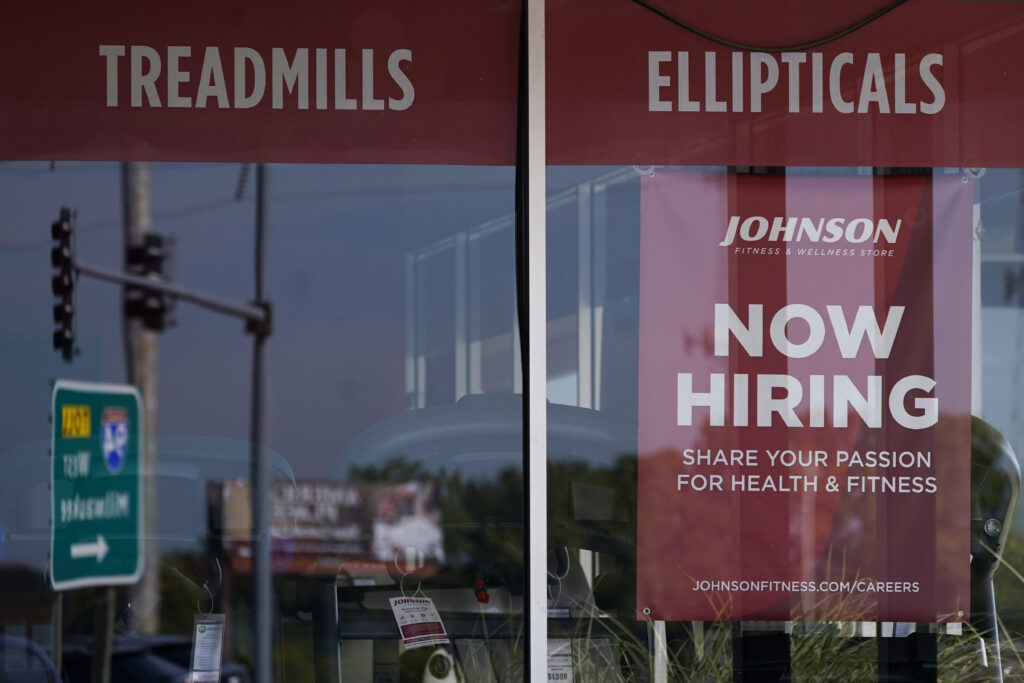U.S. jobless claims/ unemployment benefits/ Federal Reserve rate cut/ U.S. labor market/ September 2024 unemployment data/ Newslooks/ J. Mansour/ Morning Edition/ U.S. unemployment applications fell to their lowest level in four months, with 219,000 claims for the week ending September 14. The drop exceeded expectations, with economists predicting 230,000 new filings. This decline follows moderate increases in jobless claims, as the Federal Reserve shifts focus from inflation to supporting employment.

US Jobless Claims Drop Quick Looks:
- U.S. unemployment claims fell by 12,000 to 219,000 for the week of September 14.
- The decline in jobless claims was lower than economists’ forecasts of 230,000.
- This reduction comes amid the Fed’s first interest rate cut in four years.
- The four-week moving average of claims also declined by 3,500, hitting 227,500.
- The number of Americans collecting unemployment benefits dropped to 1.83 million.
US Jobless Claims Drop to 4-Month Low in September
Deep Look:
The number of U.S. citizens applying for unemployment benefits dropped to its lowest level in four months, with jobless claims falling by 12,000 to reach 219,000 during the week ending September 14, 2024. According to the Labor Department’s Thursday report, this significant decrease exceeded economists’ expectations, which predicted a slightly higher total of 230,000 new claims. The latest decline marks a shift from the gradual increase in filings observed since May, reflecting a potentially healthier job market despite previous fears.
Unemployment benefits claims are generally seen as a barometer for layoffs, with recent months showing moderate increases. Although the jobless claims were still at historically low levels, the uptick raised concerns that the prolonged period of high interest rates may have been starting to impact the labor market negatively. However, this week’s sharp decline suggests otherwise, at least for now.
The Federal Reserve responded to the recent weakening of the labor market and softer inflation trends by announcing its first interest rate cut in four years on Wednesday, lowering the benchmark rate by 0.5 percentage points. After aggressively raising rates throughout 2022 and 2023 to control inflation, which had surged to two-decade highs, the Fed is now pivoting to focus on supporting job growth. According to Stephen Innes of SPI Asset Management, the Fed appears to be balancing between job creation and controlling inflation in an effort to achieve a “soft landing,” where the economy slows enough to curb inflation without triggering a recession.
Federal Reserve Chair Jerome Powell also remarked that inflation is nearing the central bank’s long-term target of 2%. With consumer prices easing, Powell expressed confidence that inflation is largely under control. Still, the Fed’s decision to reduce rates signals its desire to ensure that the labor market doesn’t suffer as a consequence of its previous tightening measures.
Earlier in 2024, weekly unemployment filings averaged around 213,000 before rising gradually in May, reaching a peak of 250,000 by late July. The increase in jobless claims over the summer lent support to the belief that the Fed’s rate hikes were successfully cooling down the previously overheated job market. However, the significant drop in claims for the week of September 14 suggests a rebound in labor market strength.
Despite the August jobs report showing a modest gain of 142,000 positions—a notable increase from the revised 89,000 in July—it remains well below the robust monthly average of 218,000 seen earlier in the year between January and June. Additionally, the Labor Department had recently revised its jobs data, showing that 818,000 fewer jobs were added between April 2023 and March 2024 than previously estimated. This downward revision further indicated a gradual slowing of the U.S. job market, prompting the Fed to pivot towards more supportive policies.
In the latest report, the four-week moving average, which smooths out fluctuations in weekly jobless claims, fell by 3,500 to 227,500, reinforcing the view that the labor market remains resilient. Meanwhile, the total number of Americans receiving unemployment benefits decreased by 14,000, leaving 1.83 million people collecting benefits as of September 7. This is the lowest level seen since early June, adding another indication that the labor market may still hold firm despite ongoing economic adjustments.







